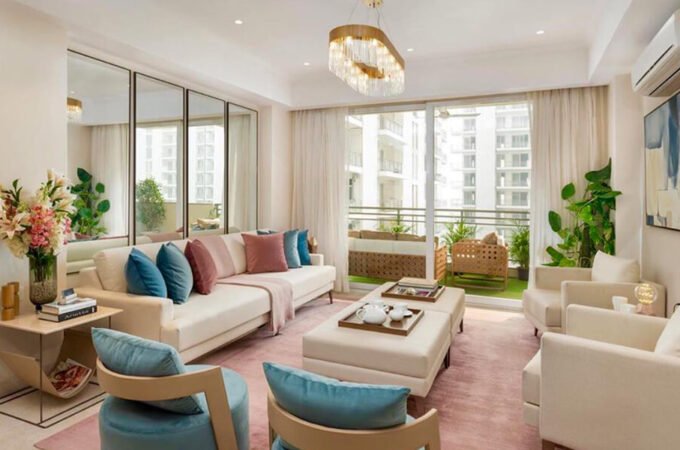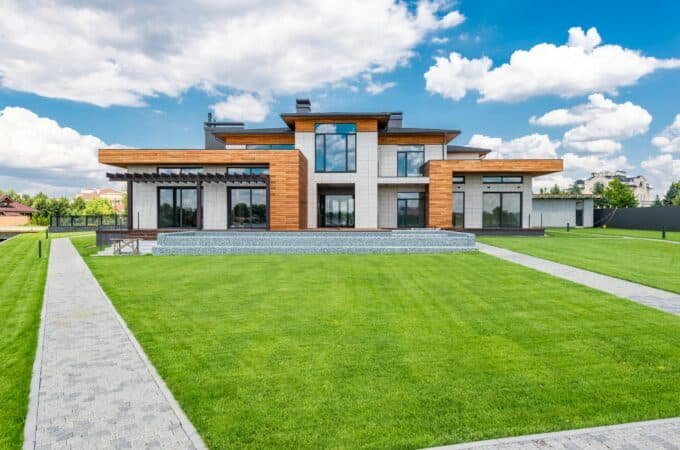
How to Choose the Right Sofa Color
When it comes to furnishing your living space, the color of your sofa might not be the first thing that comes to mind, but it plays a pivotal role in defining the overall look and feel of your room. Your choice of sofa color can either make or break the aesthetics, turning your living room into a captivating masterpiece or a mismatched jumble. In this blog post, we will explore how to choose the right sofa color, backed by expert advice and statistical data.
Table of Contents
ToggleThe Importance of Sofa Color in Room Aesthetics
The color you choose for your sofa is one of the most critical decisions when it comes to defining the overall aesthetic and atmosphere of your living room or family room. As one of the largest furniture pieces occupying the space, the sofa will naturally draw the eye and become a major focal point, setting the tone for the rest of the décor.
Make a Statement or Blend In
Vibrant, saturated colors like cardinal red or deep royal blue make a sofa the undisputed center of attention. These sofas cannot be ignored and will become the conversational showcase of the room. On the other end of the spectrum, neutral-toned sofas in lighter shades of beige, tan, gray, or oatmeal subtly blend into the surroundings without demanding attention. Think carefully about whether you want your sofa to be the star of the show or quietly complement other elements.
Another eye-catching option is a multi-colored sofas incorporating several bold hues like teal, coral, and lemon yellow. The mix of colors creates a vibrant, eclectic focal point. Think carefully about whether you want your sofa to be the star of the show or quietly complement other elements. Multi-colored sofas certainly steal the spotlight in any room.
Complement the Decor
It is extremely important to consider how well your potential sofa color will coordinate with or clash against your existing interior paint colors on the walls, your flooring, and other large furniture pieces and overall decor style in the room. For example, an emerald green sofa may complement and feel cohesive in a room with earthy terracotta walls and hardwood flooring. However, that same green sofa will likely feel disjointed and out of sync in a cool-toned room with gray walls and modern furnishings.
Influence the Mood
Sofa colors have a profound psychological influence on us. Warm red hues may make a room feel lively and energetic. Cool blue sofas can evoke a serene, meditative mood. Sunshine yellow sofas will instantaneously lift spirits and impart cheer. Carefully consider the vibe you aim to achieve in your family room or living room and choose a sofa in a color that will enhance that intended purpose, whether relaxation, social gatherings, or productivity.
Strategies for Adding a Sofa to an Already Decorated Room
If you’re adding a sofa to a room that’s already decorated, you face a unique challenge. Your new sofa should seamlessly blend with the existing color scheme or stand out as a deliberate statement piece. Here are some strategies to consider:
- Match the Wall Color – Choose a sofa in the exact shade as the wall color for a cohesive monochromatic look. Gray is the most popular wall and sofa color. Or pick an existing accent shade like navy blue. Add pillows in various patterns and textures for visual interest.
- Complement the Color Scheme – Identify the color scheme first. For example, are they warm earth tones or cool pastels? Select a sofa color within the same palette that compliments your scheme. A burgundy sofa could suit an earth-toned room or steel blue for a cool palette.
- Contrast with a Bold Color – Go bold with a vivid sofa color that pops against neutral walls and decor. A bright teal sofa makes a dramatic contrast in a brown and beige room. Just make sure to tie it in with small accents of that color like pillows and artwork.
- Work With the Flooring – Flooring also impacts how sofa colors look. Dark leather sofas stand out against light hardwood or carpet. Light upholstery gets lost on white floors. Consider one lighter and one darker between floors and sofa.
The Designer’s Perspective: Matching Wall And Sofa Colors
Many professional interior designers frequently adopt the strategy of selecting identical colors for the wall paint and sofa upholstery to create a streamlined, monochromatic look. While this approach has some advantages, there are also important limitations and caveats to consider before using this technique.
Potential Benefits of Matching Wall And Sofa Colors
- Matching wall and sofa colors can create a unified, enveloping, serene effect. It is pleasant for the eyes to flow smoothly around the room.
- Monochromatic rooms often feel more expansive and spacious, as matching colors “push back” the walls.
- With walls and sofas matched, other furniture and accent pieces “pop” more for greater visual interest.
- It simplifies the decorating process significantly by eliminating one major color choice.
Possible Drawbacks of Matching Walls and Sofas
- Overt matching can feel monotonous or flat without plenty of texture and tone variation.
- Having the sofa match walls limits overall color scheme options for accent pieces.
- Darker shades like navy or charcoal may appear too overpowering or dramatic when walls and sofa match.
- The space needs additional fabrics, metals, woods, and patterns to avoid feeling one-note.
To make this look work, add pillows, throws, rug and accessories in complementary colors and varied prints and fabrics for visual interest. Use contrasting woods and metals for tables, lamps, and other accents.
Popular Sofa Colors and Psychological Effects
Certain sofa colors repeatedly rank as top choices. Here are some of the most popular shades and the vibes they evoke.
- Gray – Balanced, tranquil, versatile
- Blue – Calming, orderly, focused
- Beige – Warm, welcoming, relaxed
- Green – Renewing, peaceful, stable
- Red – Energetic, passionate, bold
- Yellow – Uplifting, playful, cheerful
Whichever you choose, the color will impact the mood of the room and how people interact with the space. Set the tone you want.
Light vs. Dark Sofas: What to Consider
The depth and saturation of the sofa color you choose will dramatically impact the overall look, feel and functionality of your space. Here is an in-depth look at the key considerations when deciding between light and dark sofa colors.
Benefits of Choosing a Light-Colored Sofa
- Light-colored sofas visually expand and open up smaller spaces, making rooms feel more airy and expansive.
- Pale upholstery reflects light rather than absorbing it, helping brighten up darker rooms or spaces with minimal natural light.
- Light-colored sofas convey a fresh and clean aesthetic more effectively. They show less visible dirt and grime compared to darker upholstery.
- Pastel, stone, and neutral light sofas are easier to keep looking new. Spot cleaning and disinfecting are simpler compared to dark fabrics.
Benefits of Choosing a Dark-Colored Sofa
- Dark sofas provide a grounded, stabilizing foundation and anchor for lighter accent pieces in a room.
- Deep, saturated hues like emerald, sapphire, and ebony create a cozy, enveloping, intimate feel.
- Dark leather and upholstered sofas conceal dirt, pet hair, and general wear and tear much better than light fabrics.
- Rich shades like chocolate, charcoal, and black hide stains so dark sofas don’t require frequent professional cleaning.
To balance out a dark sofa, use light area rugs and wood furniture. For a light sofa, choose some dark wood or metal accents and decorate with bold patterns and colors.
Practical Tips for Maintaining Light Sofas
While gorgeous, light upholstery does need some maintenance to stay looking pristine. Follow these care tips.
- Choose performance fabrics like wool blends
- Use washable slipcovers for cushions
- Immediately spot clean spills
- Vacuum regularly and shampoo clean every 1-2 years
- Rotate cushions to evenly distribute wear
- Keep upholstery out of direct sun to avoid fading
With a bit of diligence, a light sofa will maintain its beauty and work in any style of room.
Finishing Touches: Accessories and Additional Seating
Finish tying the room together by coordinating accessories with your new sofa color.
- Throw pillows and blankets in complementary colors and patterns
- An area rug with colors drawn from the sofa
- Accent chairs or ottomans that pick up the sofa hue
- Drapes that incorporate print and solids to match the sofa
A well-accessorized space with your perfectly colored sofa as the anchor will create a welcoming and stylish room for relaxation and enjoyment.
Frequently Asked Questions
What is the most popular sofa color?
Gray is currently the most popular, chosen by 49% of consumers in a recent survey. It works in modern and traditional spaces and pairs with nearly any color scheme.
How can sofa color make a room appear larger or smaller?
Light and bright colors visually expand a room while dark hues feel more intimate and cozy. High-contrast sofas also make rooms feel larger.
What sofa colors are easiest to maintain?
Darker colors like black, brown and navy hide dirt, stains, and pet fur better than light colors. Patterned upholstery is also more forgiving. For light sofas, performance fabrics resist stains.
Conclusion
Choosing the ideal sofa color involves considering room aesthetics, decor, mood, size, lighting, and maintenance. Follow the expert guidance in this article to select the perfect shade for your space and lifestyle. Then build on that with coordinating accessories for a pulled-together living room you’ll absolutely love.






